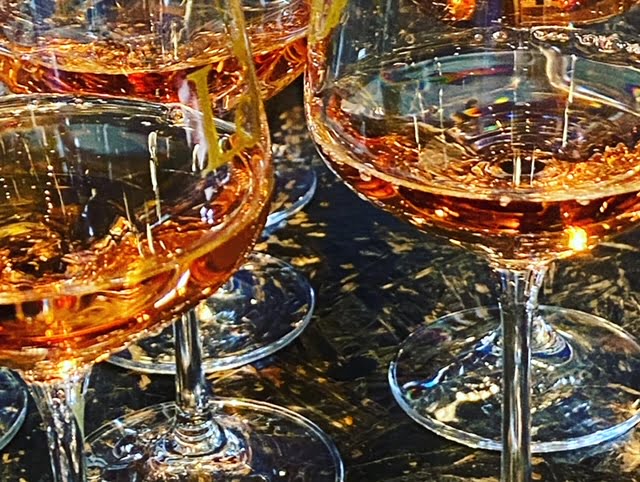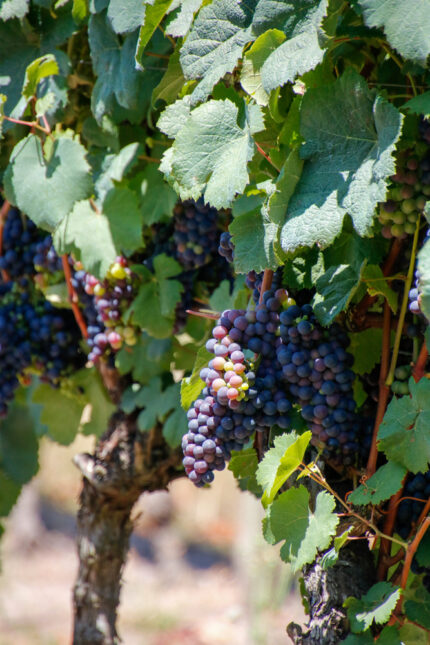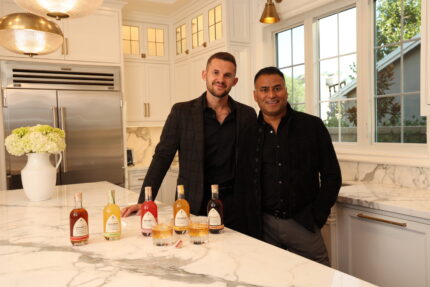Sensory Overload

“I taste tobacco with a hint of currant and maybe even some shoe leather. To me, this is a big cherry fruit bomb …”
I refused to make eye contact with my husband. I knew that I was in for the classic eye roll or perhaps the under-the-table shin kick.
We were at dinner with those friends — you know, the ones who knew so much more about wine than we did. The ones who knew about swirling, proper stemware, what flavors should be in a certain glass of wine, and were willing to spend much more than we wanted to per bottle.
On the conversation home, my husband asked me, “Did you really taste all of those flavors? I taste … wine. And, why in the heck would I want to drink shoe leather?”
Over the years and after drinking many bottles of wine, I am at the point where I can taste certain flavors in a glass. But reading tasting notes or sitting around with your friends enjoying wine is one thing. When you have to do it without notes, without discussion, and without anything but your intuition and palate, that’s another.
So, I thought I’d put my knowledge to the test at a sensory evaluation tasting hosted by Women for Wine Sense. Or as my husband, who attended the tasting with me, put it, Women, Plus One Man, for Wine Sense.
Our group met on a sunny Saturday morning and we were given one caveat — no coffee before the tasting. The organizers wanted our taste buds to be fresh for what was ahead.
Armed with four white wines and one intimidating blank piece of paper, we began our sensory journey. The first hour was spent focusing on sight and smell. We were asked to judge each wine by its clarity — was it cloudy or clear — as well as its color.
Sensory Overload
Yes, all were “white” wines, but they were different shades. Two of the wines had hints of green in their color, one was pale, and one was golden.
Sensory Overload
For smell, we were asked to swirl the wine and take a deep whiff. Grapefruit. Menthol. Green pepper. Lychee. Butterscotch. Melon. Lemon. Vanilla, or Coppertone as I deemed it.
I smelled these aromas in those four wines. They then passed out about 20 samples of various items, including small roses, butter, pear, and lemon to allow us to smell different aromas and see if this woke up our olfactory senses.
It was then time to taste — hurray!. We judged for sweetness, acidity, bitterness, and any saltiness — ew, thankfully none. You taste sweet things with the tip of your tongue. Acidity is determined on the sides of your tongue. And bitterness is detected in the back.
We sipped. We swirled. We spat into buckets. And then we repeated the process.
Finally we had to come to conclusions about the types of wine. I correctly picked three out of the four — sauvignon blanc, riesling, and gewurztraminer. But I was shocked to find that I missed the most obvious of them all — an oaked chardonnay. It was my least favorite of the bunch, smelled like Coppertone, and was uninspiring.
It was a really cool experiment and a fun exercise.
The next time you pour a glass of wine, stop for a minute. Swirl it in the glass and look at the color. What do you see?
Put your nose deep into the glass and take a big whiff. What do you smell? Take a small sip of the wine and think about the different flavors that you taste.
And finally, if you are up for the challenge, put it in a brown bag and see if your friends can figure out the varietal.
I currently don’t see a sensory evaluation class on the calendar in Dallas for March or April. But, when one is scheduled, forego the coffee and give it a try. I promise you won’t have to taste shoe leather.
Powered byTwitter



